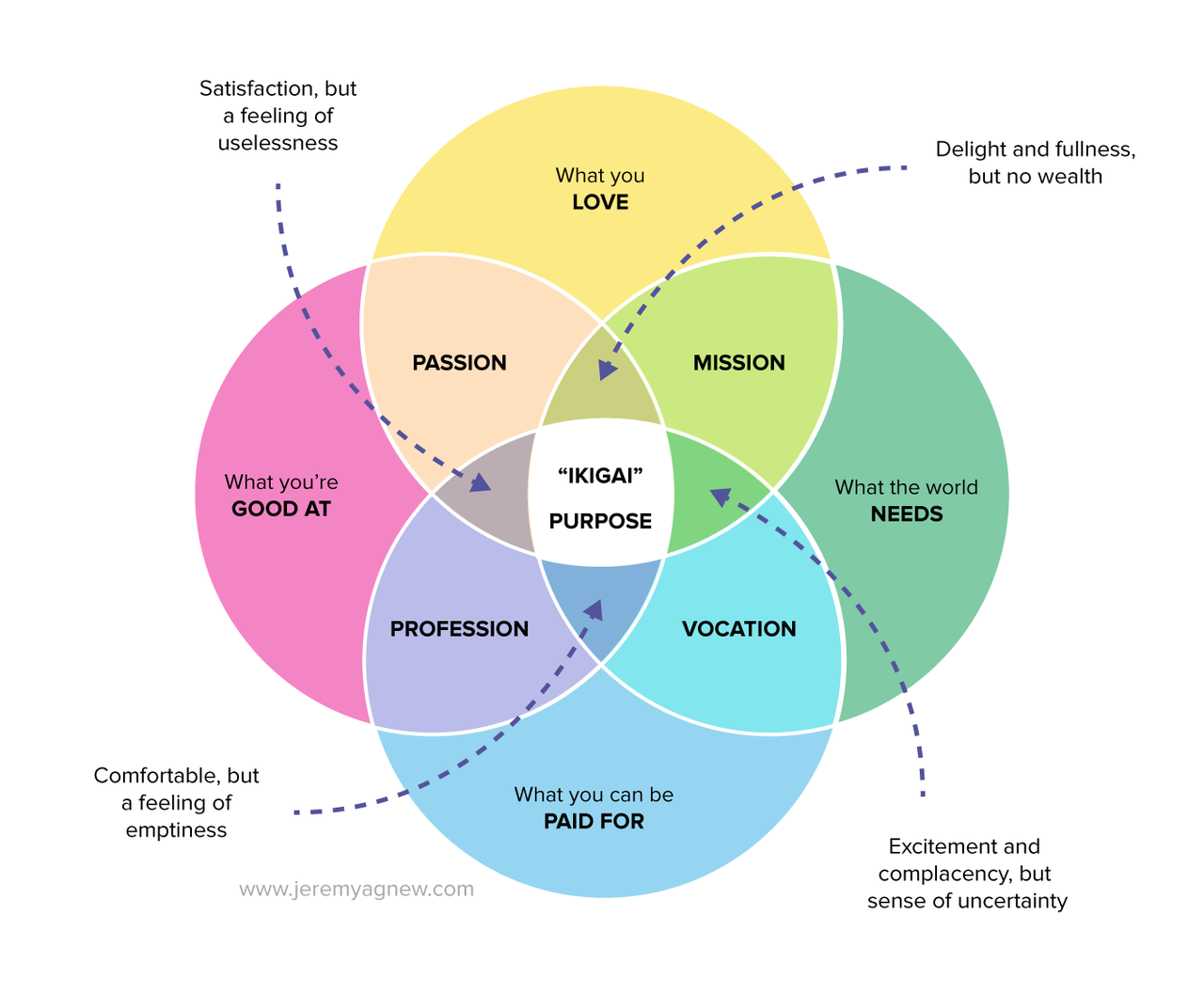One of the exciting things about working in financial services is the sense of synchronicity between what we learn in theory and how we see it play out in practice. Rarely a day goes by when I’m not reminded how meaningful our work is, in breaking down the complexities of the financial world, so our clients can move toward achieving their goals in a way which seems simple. Helping my clients provide for their future, for their families’ future, is how I make a living and in turn provide for my family… could there be any better motivation for getting out of bed each day?
I saw this concept of motivation and purpose beautifully illustrated when I attended a symposium for health professionals, as part of my work for an organisation that is involved in helping doctors manage their own health.

Like other great graphic organisers, this one looks impressive in and of itself. The overlapping outer circles look petals of an iconic Asian flower such as the chrysanthemum, which features prominently in Chinese artwork as a symbol of survival. In the ‘inner petals’, one can make out a face or a star or a mask. And all of those layers meet in the middle, in its heart – as all good treasures do – at the point described as ikigai, which loosely translates to your reason for being.
The Japanese island of Okinawa, where ikigai has its origins, is said to be home to the largest number of centenarians in the world. Researchers who try to understand their vitality have arrived at varying conclusions – about their diet and exercise, the quality of their air – but they also keep coming back to the concept of a meaningful life directly contributing to a longer life. To put it another way, a meaningless life – a sense of emptiness, uncertainty or uselessness about how you spend your days – could well shorten your lifespan.
Just days after I saw this concept of ikigai illustrated for the first time, I read in the paper about a local sculptor who is using her previous experience in retail to develop her artistic products and processes. She said the hardest thing about art is the stigma that artists make their pieces ‘for the love of it.’
“If you go into making art with the mentality you won’t make money then you won’t,” she said.
Now I think that’s a very clever and very pertinent observation.
I hear all the time about other artists – photographers, designers, website developers and musicians – who are invited to donate their work or time in exchange for ‘exposure.’ About these so-called ‘influencers’ who make demands on retail business to donate their goods or services in exchange for a shout out on their Instagram page. It’s all good and well to be good at art, to love making art, and to justify its importance in contributing to a given region’s cultural offerings.
But, if at the end of the day, you don’t plan to at least recoup your costs – in terms of materials, packing, postage, transport and so on – let alone pay yourself a wage for the hours you put into each piece, then it seems unlikely your art is going to bring you much peace of mind. Worse, pouring all that money into something you don’t get paid for is probably going to cause you some degree of uncertainty – about how to pay the bills, for example – and leave your pockets empty.
How about you… how’s your ikigai?
- Are you slogging away at a job which bores you because it pays the bills?
- Are you barely paying the bills in a job which you nevertheless love because you’re helping people?
- Are you getting paid heaps to do a job which you’re not even sure you’re very good at?
Making an appointment with a trusted financial planner is the first step to balancing out what you love and are good at with how society values your work and what you get paid for it.
Please note this article provides general advice only and has not taken your personal, business or financial circumstances into consideration. If you would like more tailored advice, please contact us today.

